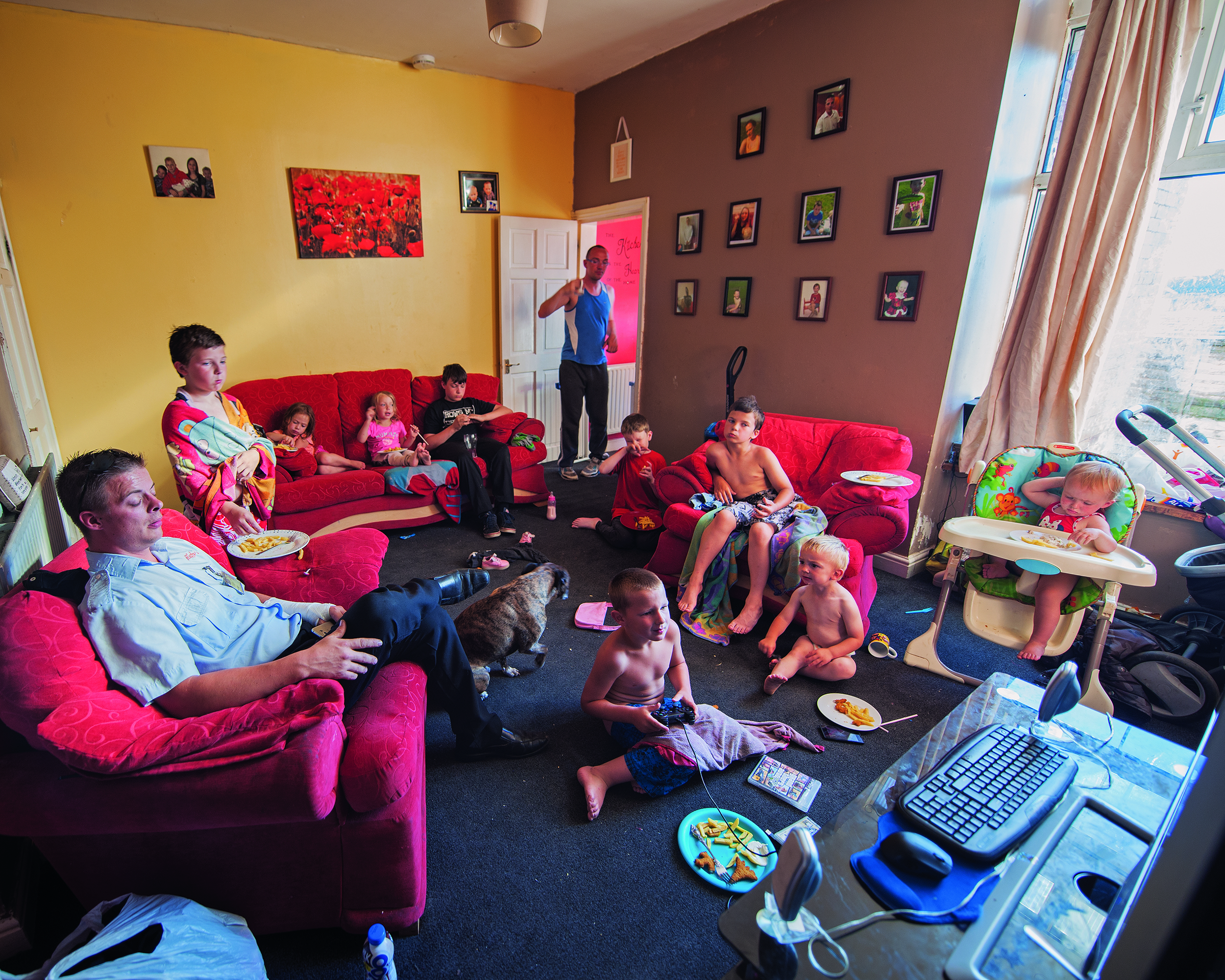© Craig Easton. All images courtesy the artist and GOST
This article first appeared in the Money+Power issue of British Journal of Photography. Sign up for an 1854 subscription to receive the magazine directly to your door.
Shot over two decades, Thatcher’s Children follows two generations of the Williams family, let down by the systemic failure of successive governments’ social policy
Ten days before the UK general election in December 2019, an episode of Channel 4’s investigative news programme Dispatches sent shockwaves through the British media. Growing Up Poor: Britain’s Breadline Kids followed three families as they navigated food-bank usage, fuel poverty and the physical and mental health issues associated with living on the brink. The show, which was nominated for a Bafta, featured extensive interview footage with children, including Cameron, whose knowledge of food banks epitomised the psychological impact of child poverty: the tragic self-awareness, loss of innocence and vulnerability of knowing you are growing up poor.
“We try not to eat a lot in one day,” Cameron says, his face pale. “Even though most of us are really hungry, we have to be careful with our food.” The show’s unflinching reporting – and, no doubt, its proximity to an upcoming general election – drew an official comment from Margaret Greenwood, then the Labour Party’s shadow secretary of state for work and pensions. “Families are often being left with impossible choices between eating, heating and paying the rent,” she said. “We will make tackling child poverty the priority it should be once again so that every child can feel valued and cared for.”
Both the Dispatches episode and Greenwood’s speech could have been made today. This speaks not just to government inaction on poverty, but to the cyclical nature of the UK’s political debate. On-the-ground reporting is met with shock, while politicians of all stripes promise poverty eradication as the United Nations indicts the country’s inequality. Meanwhile, charities and communities clamber to fill the gaps left by decimated public services, fighting perceptions of poverty as much as the problem itself.
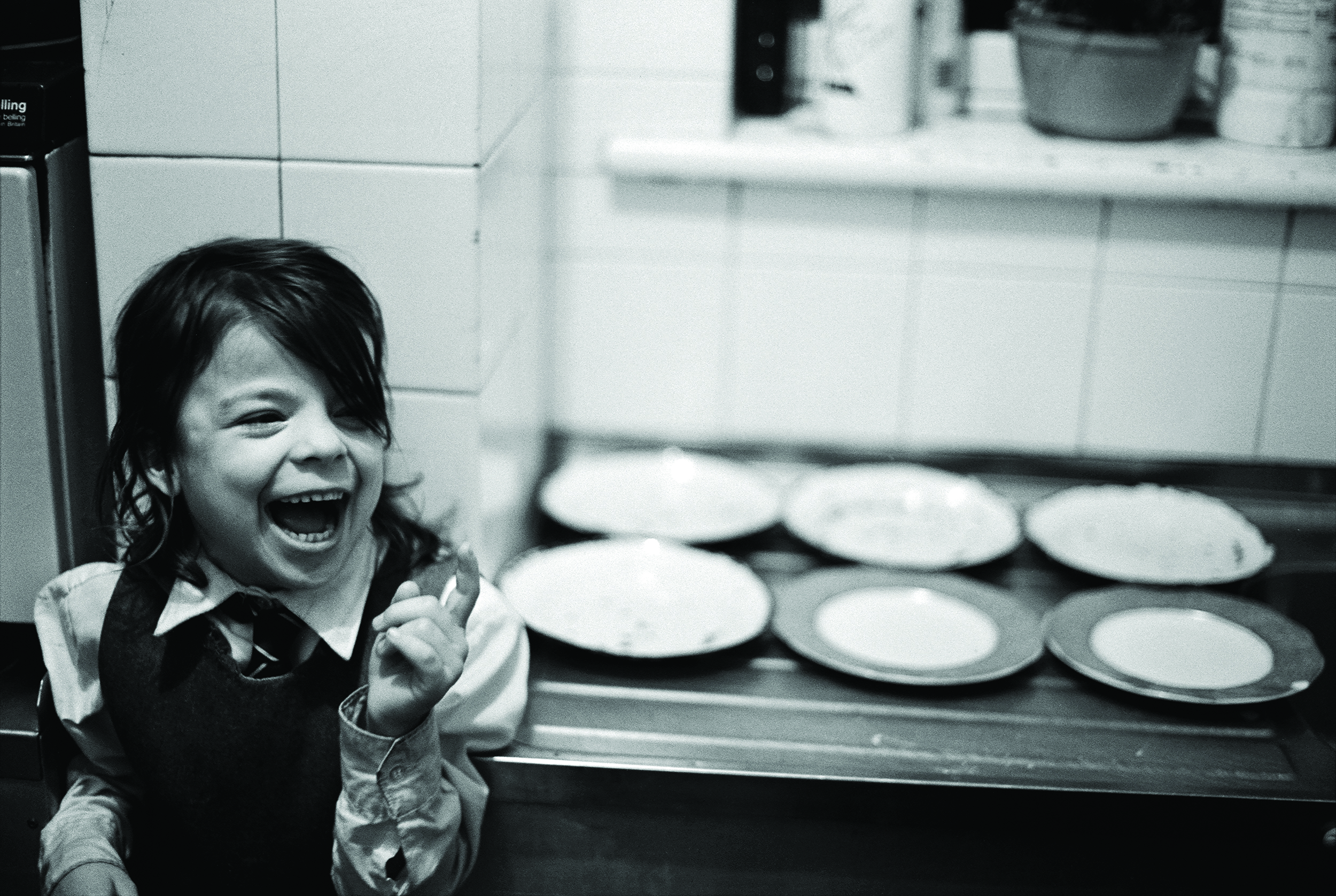
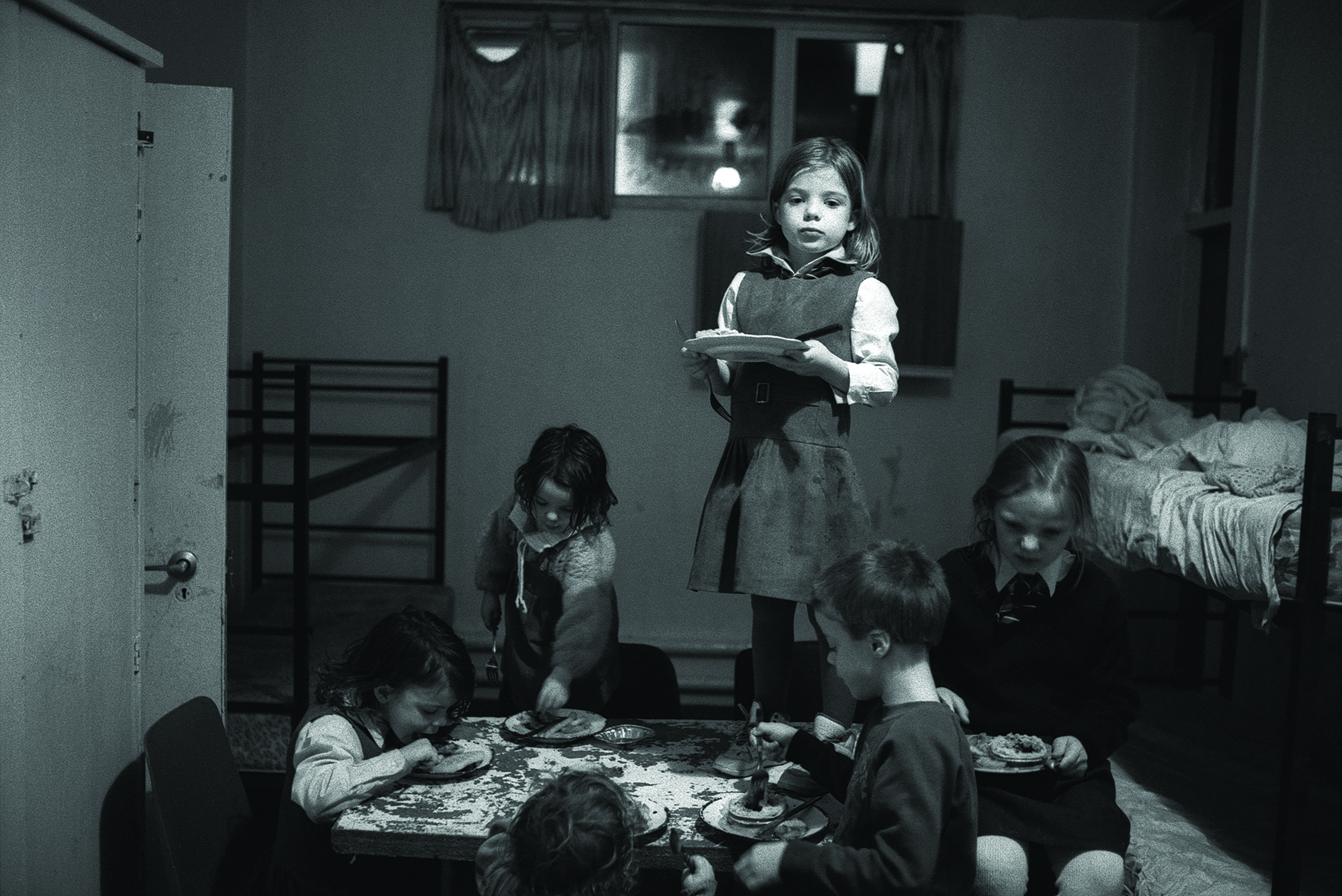
At a speech given at the 1992 Conservative Party Conference, social security secretary Peter Lilley bemoaned the UK’s “something-for-nothing society”, declaring that he would root out “benefit offenders”. His diatribe caught the attention of French newspaper Libération, which sent a journalist to the north of England to investigate this so-called “underclass”. Craig Easton was commissioned to illustrate the story, photographing the Williams family in a Blackpool hostel. In 1994, The Independent published an image from the shoot on the day of BBC Children in Need. The paper devoted a whole page to a photograph of four-year-old Katrina under the headline ‘Tea with the Williams family’. Katrina eats chips at a worn table, looking despondent as her sister chews beside her. A short article explains the cycle of unemployment and poverty that traps Mick and Mandy, her parents. “The kids are stigmatised at school for being so poor,” the text reads.
For the original shoot, Easton spent three to four days with the Williams parents and their six children. Mandy and Mick had run a courier business in the mid 1980s before the company failed, leaving Mick to jump between delivery and removal jobs. After successive employers went under, the family was unable to afford private housing and, in 1990, was moved into a shelter, at that point living entirely off state welfare.
If Cameron from Dispatches is a child of George Osborne’s austerity programme, then Katrina owes her circumstances to Margaret Thatcher. Like the documentary, Easton’s photograph provoked a mass public response, mostly in the form of letters to The Independent. Some people did not believe what they were seeing. Others asked for charity recommendations to help the family. “Some people had lived a gilded decade; a lot of them had no idea of the impact of deindustrialisation,” Easton says. “It was interesting that people were able to go through life not knowing what British society is like – and it’s the same now.”
In 2016, Easton reconnected with the Williams family and made a series of new photographs of Mick and Mandy’s children, now dispersed across the country with families of their own. Shown alongside his work from the 1990s, the pictures have become Thatcher’s Children, a polemical photobook published at the end of last year. The images are interspersed with quotations from the Williams family, and from British politicians of both major parties – the verbal descendants of Peter Lilley’s demonisation of the working classes, and a damning reflection on neoliberalism’s fictions of aspiration. Peter Mandelson encouraging people to get “filthy rich”; Tony Blair stating his mission to eradicate child poverty in 20 years; Rishi Sunak declaring that he will “govern as a Thatcherite”.

“The existential question for documentary photography is whether it can make a meaningful contribution to such a complex and desperate social reality”
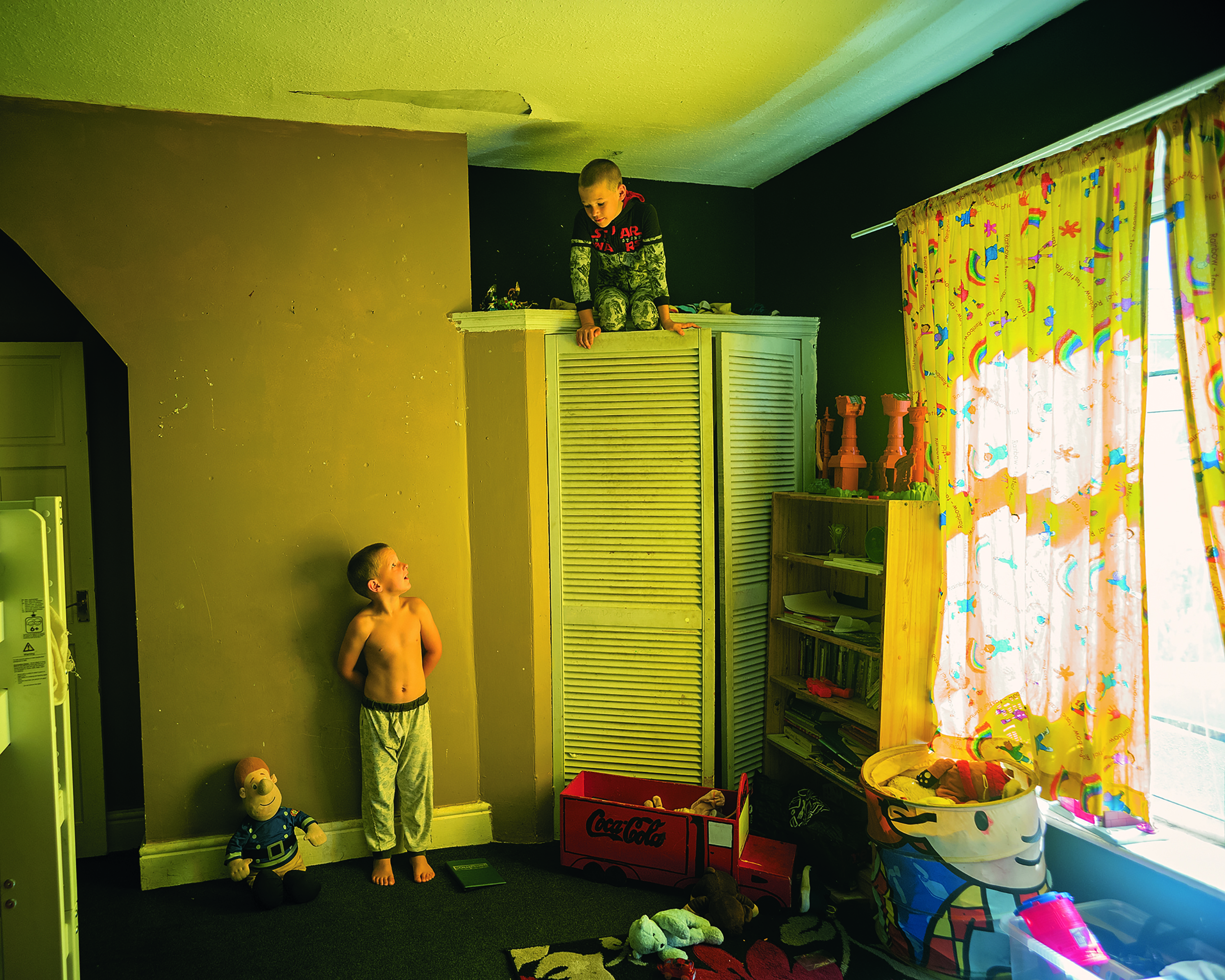
The passing of time
What stands out most about Easton’s 90s photographs is their animation – life lived restlessly rather than paused, rearranged or altered for the camera. Children clamber over the kitchen worktop, fiddle with the television set, and writhe impatiently when posing for a whole-clan photograph. Mandy’s facial expressions are typically parental: unimpressed with a toddler’s demands; smirking over her shoulder at an unseen commotion; overcome with joy in a moment of group harmony. “I wanted to see daily life without shying away from the tough bits,” Easton says. “But I’m not saying that there isn’t joy here.” There is the sense that, if they could, Mandy and Mick would choose to hit pause, to edit life’s transcript and reverse its injustices. But for now, living all together in two rooms, the photographs show a necessary resilience.
Easton lost touch with the family after the shoot, working on a range of other projects in the meantime. In 2005, he attempted to reach out via former schools and social services, but with no success. It was not until 2016, when he received an unexpected reply to a Blackpool Facebook advert, that he tracked down Emma, one of the Williams children.
Emma was curious; none of the children had seen Easton’s photographs before. The six siblings were now living across the Midlands and north of England, in Aspatria, Darwen and Accrington, with more than 20 children between them. Easton visited them in turn, showing them his archive and filming their responses. “It was really emotionally charged,” he says. Easton did not plan to continue the project, but began interviewing and photographing the family again in 2018. Mandy’s testimony is revealing. “The system doesn’t work for people like us,” she said. “[My children] were promised that if they got educated, got qualifications, then they’d have a better future. But it wasn’t true. They say if you work, you’ll pull yourself up. But it’s a lie.”
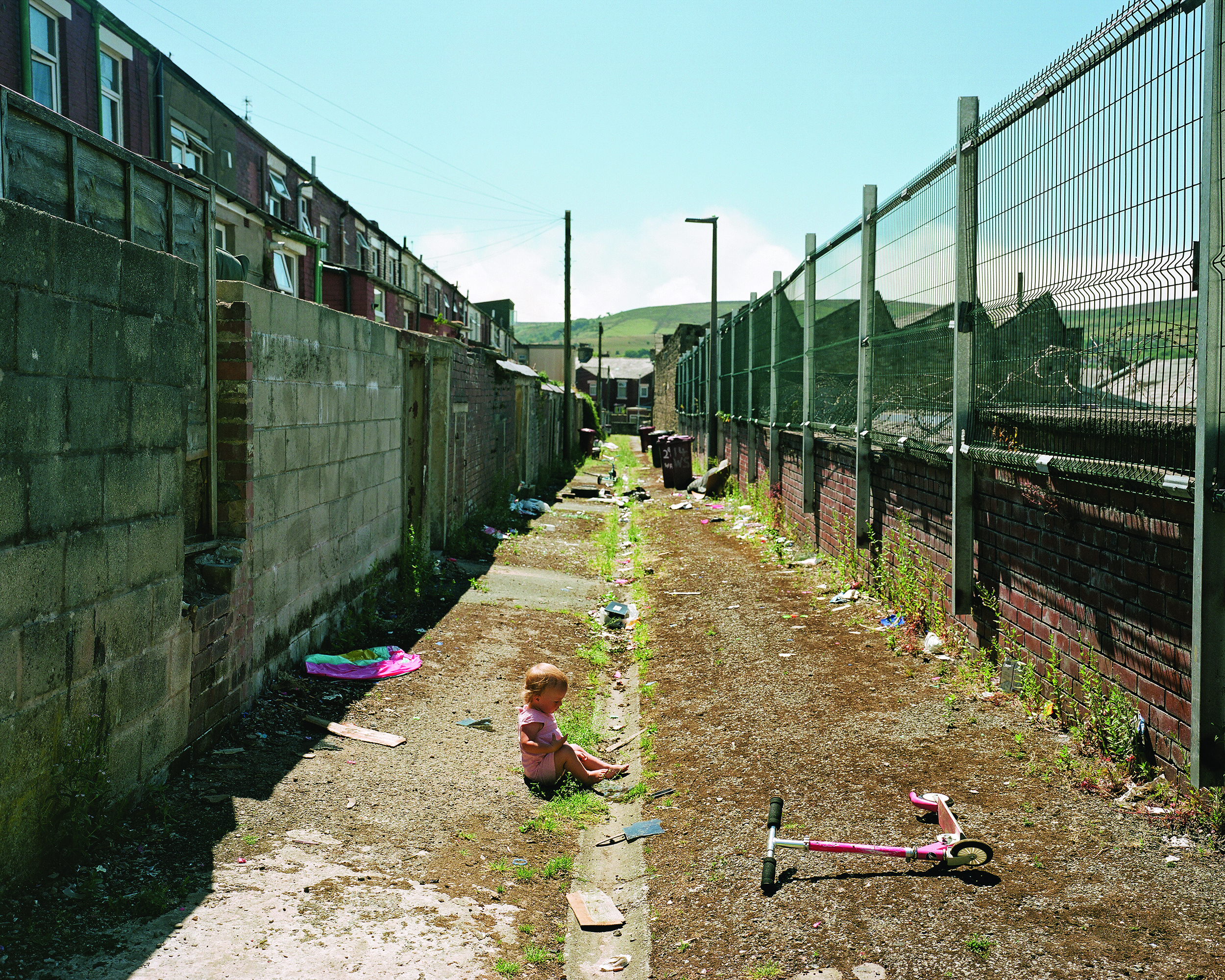
Easton photographed in colour the second time around, the style warmer and more choreographed. Still the children climb on the parents’ reclining bodies, hang out in alleyways, appear unfazed by the peeling wallpaper and uncovered mattresses. Colour makes the shots less austere, the sense that the children are in bloom rather than hibernation. There is, in short, more hope. Some of the six siblings’ circumstances have improved into adulthood, but certain tropes remain, especially overcrowding and parental exhaustion. And this time, Easton highlights the motifs of financial struggle: a gas meter displaying ‘No Money’; bills piling up; an eviction notice delivered by text three days before Christmas.
Playing politics
While Thatcher’s Children illustrates the stasis of UK social policy, it does reflect a cultural shift in documentary photography – in both production and presentation contexts. When Easton first shot the Williams family, black-and-white documentary work was deeply entwined with photojournalism. By running the image of Katrina, The Independent was making an explicit political comment: “We were basically writing a short story about the poverty trap,” Easton says.
In the preceding decades, charities’ use of documentary imagery had strengthened this association between visual storytelling and activism – with titles like The Independent becoming willing megaphones for social causes. Between 1968 and 1972, Nick Hedges was a researcher for Shelter’s National Campaign for the Homeless, photographing desperate conditions in Glasgow, Bradford, Newcastle and Liverpool – a new strand of raw, unsanitised pictures. Mark Power photographed for The Children’s Society in the mid 1980s, his work a precursor to Easton’s all-hours style: stained white walls, worn furniture, and children playing among the litter – their cheeks often blackened. Power’s photograph of a girl crouched on a crumbling staircase appeared on billboards before the 1987 general election with the slogan “The Children’s Society. Needed now more than ever”.
But while charity commissions and campaigns relied on hard-hitting, overtly politicised imagery from the 1970s onwards, documentary photobooks remained a more elusive form, despite their similar subject matter. Chris Killip described his In Flagrante (1988) – one of the most important British social documentary photobooks of the 20th century – as “a fiction about metaphor” of post-industrial life in northern England. “I wanted to record people’s lives because I valued them,” he told BJP in 2017. “I was just trying to say that these people are part of history.” Paul Graham’s Beyond Caring (1986) showed people in social security offices throughout beleaguered UK cities, but was more exposé than polemic. Thatcher’s Children is a blunt instrument by comparison, the image-text combination used for explicit consciousness-raising. “I don’t like this idea that I’d take a bunch of pictures and put them in this book just as pictures,” Easton says. “They have to have that context and connection to policy.”
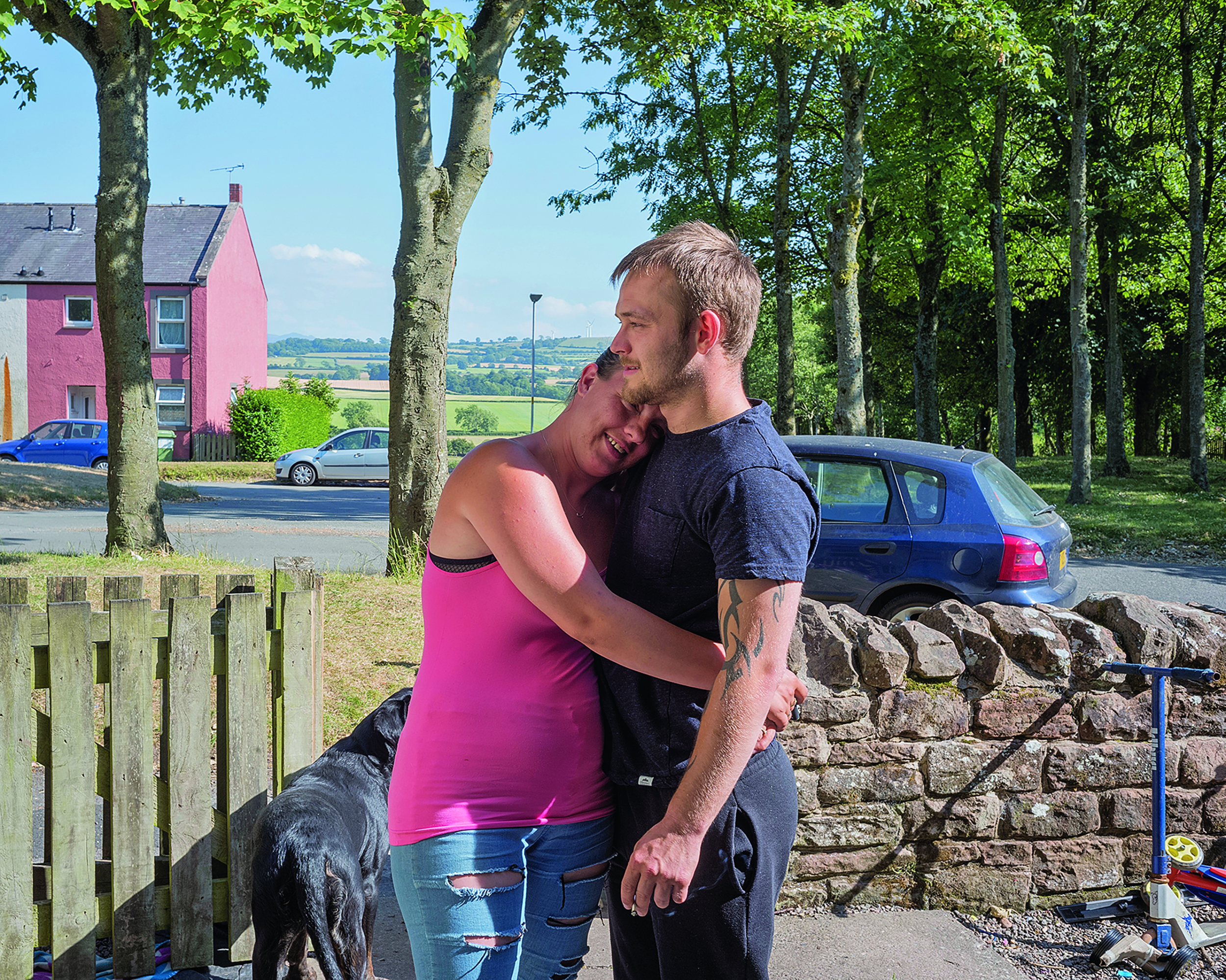
In this sense, Thatcher’s Children is in line with today’s documentary projects, where text, first-person testimony and subject involvement are key. Kirsty Mackay’s book The Fish That Never Swam (2021), for example, was made in response to a Glasgow Centre for Population Health report into Scotland’s excess mortality rate, and features excerpts of the paper alongside Mackay’s portraits. “I can’t portray someone as a one-dimensional victim,” she says. “I’m also looking for the positive – and you can’t always get that nuance across with just a picture.”
When the £20 uplift to Universal Credit was withdrawn in October 2021, Mackay made a portrait of Katie, a 38-year-old mum who had recently been evicted. The photograph became part of a story in The Guardian on the cost-of-living crisis, a similar format to when Easton’s new Thatcher’s Children images were published in the paper. However, it is not a perfect medium. “I’m aware that my work is being further edited by people that don’t quite fully understand the working-class experience,” Mackay explains. “The narrative can become diluted.” But in times of economic hardship, amplifying these situations becomes a social responsibility. Easton agrees: “Families like this are so used to being talked about and not listened to… They can speak for themselves, but I want to use my access as a conduit.”
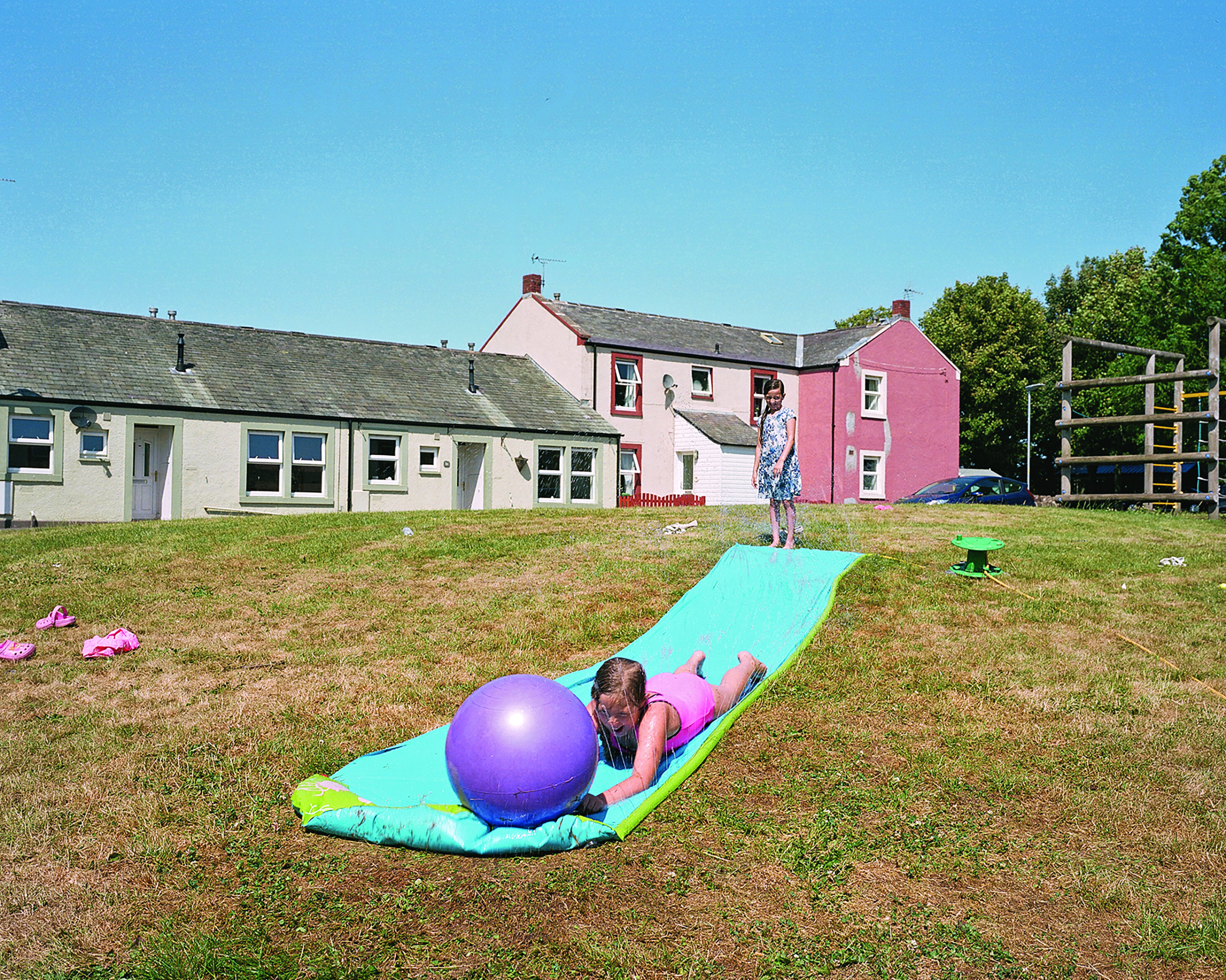
Is Anybody Listening? Easton chose the question as the title of an exhibition of Thatcher’s Children at Open Eye Gallery, Liverpool, earlier this year. It is a query that rings down the photographic generations, from Hedges to Mackay. Perhaps most disheartening are the parallels between the Williams family’s circumstances after 25 years – the inevitability of socioeconomic stasis. “If you had asked me in 1992 how these families’ lives would pan out, I probably would have guessed this,” Easton says. “I’m making the point that this stuff is constantly being talked about and it’s not making any difference.”
The existential question for documentary photography is whether it can make a meaningful contribution to such a complex and desperate social reality. Thirteen years into Conservative rule, the challenge remains not just material, but perceptive. In January this year, Ashfield MP Lee Anderson described food-bank users as people “wasting money on fags and booze and non-essentials, non-priority debts, Sky TV or Virgin Media”. He was appointed deputy chairman of the Conservative Party just weeks later. In a cultural climate so dominated by the stereotyping and demonisation of the working classes, can pictures close the empathy gap?
“When people ask, ‘Can photography change the world?’ I think, ‘What a ridiculously high bar you’re setting!’” Easton says. “It can’t change the world, but it can change opinions – and it can inform.” Radical intervention is needed – a people-focused approach. As Mandy says in the book: “Like I always say, Craig, let me be prime minister for one day… I’d make big changes.”

